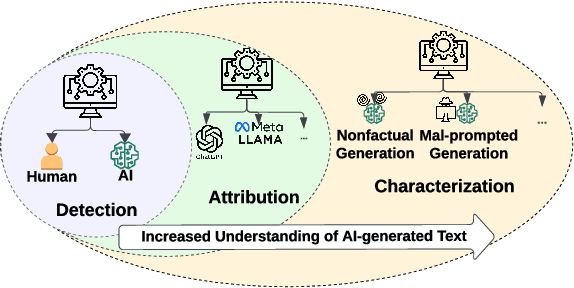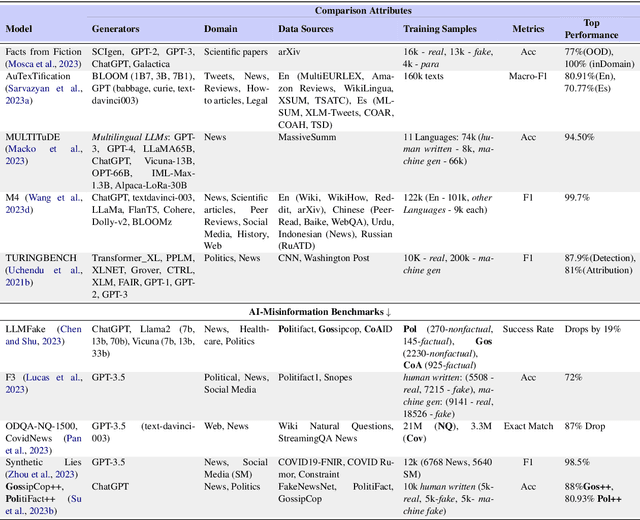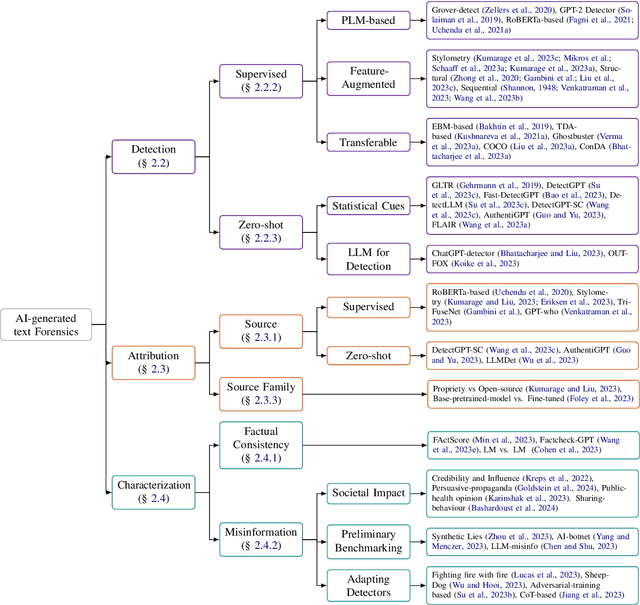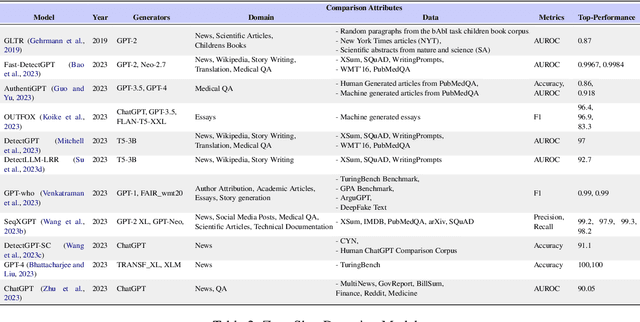A Survey of AI-generated Text Forensic Systems: Detection, Attribution, and Characterization
Paper and Code
Mar 02, 2024



We have witnessed lately a rapid proliferation of advanced Large Language Models (LLMs) capable of generating high-quality text. While these LLMs have revolutionized text generation across various domains, they also pose significant risks to the information ecosystem, such as the potential for generating convincing propaganda, misinformation, and disinformation at scale. This paper offers a review of AI-generated text forensic systems, an emerging field addressing the challenges of LLM misuses. We present an overview of the existing efforts in AI-generated text forensics by introducing a detailed taxonomy, focusing on three primary pillars: detection, attribution, and characterization. These pillars enable a practical understanding of AI-generated text, from identifying AI-generated content (detection), determining the specific AI model involved (attribution), and grouping the underlying intents of the text (characterization). Furthermore, we explore available resources for AI-generated text forensics research and discuss the evolving challenges and future directions of forensic systems in an AI era.
 Add to Chrome
Add to Chrome Add to Firefox
Add to Firefox Add to Edge
Add to Edge